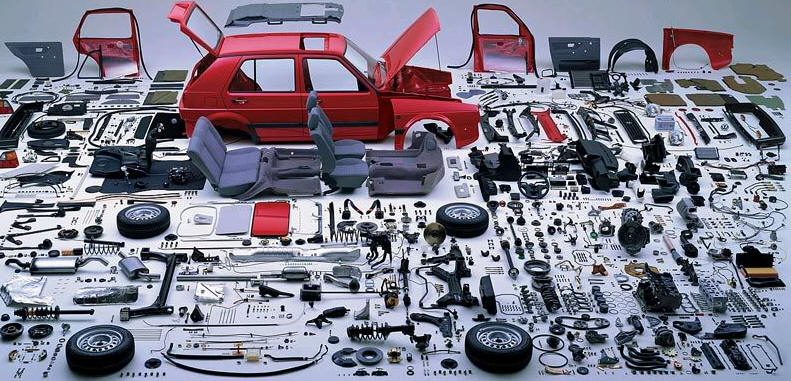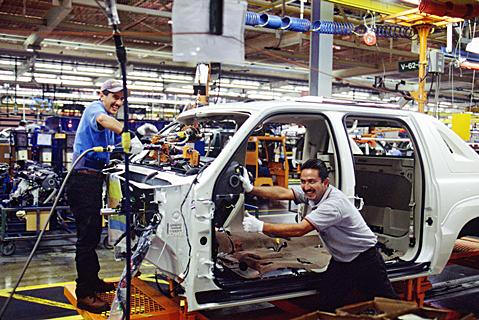IATF 16949 – Automotive – QMS

ISO/TS 16949 has been written and adopted by the industry as the new international quality management system specification for automotive suppliers. It has been adopted to encourage improvement in both supply chain and the registration process. QS-9000, VDA6.1, EAQF, AVSQ and ISO/TS 16949 are all quality management system specifications, currently used within the industry and are based on an old quality management system standard that has now been superseded. There are no plans to update QS-9000, VDA6.1, EAQF or AVSQ. Vehicle manufacturers are either making ISO/TS 16949 a mandatory requirement or encouraging their suppliers to upgrade to the new technical specification. Information on current vehicle manufacturer requirements is provided on our websites. ISO/TS 16949 is here to stay. What are you going to do?
QS-9000 the most commonly used quality management system—has reached the end of its development life as far as many vehicle manufacturers and their suppliers are concerned. Rather than continue to revise QS-9000, a committee of vehicle manufacturers known as the International Automotive Task Force (IATF) was formed to develop a new quality management system specification.
IATF members include the following vehicle manufacturers: BMW, DaimlerChrysler, Fiat, Ford Motor Company, General Motors, PSA Peugeot-Citroen, Renault SA and Volkswagen. IATF also includes trade associations—AIAG (USA), ANFIA (Italy), FIEV (France), SMMT (UK) and VDA (Germany). Japanese vehicle manufacturers association, JAMA, have also been involved in the development of ISO/TS 16949.
The IATF first produced ISO/TS 16949. After extensive revision work, ISO 9001 was developed and published. This in turn prompted the development, publication and adoption of ISO/TS 16949 an aerospace quality management system.
The specification is based on ISO 9001:2015, which encourages, a process approach, top management commitment to quality management, customer focus, competence rather than documentation and continual improvement.
For suppliers to a number of different vehicle manufacturers the new specification avoids multiple registration to VDA6.1, EAQF, AVSQ & QS-9000 thereby avoiding duplication in terms of preparation, documentation and 3rd party audits.
The new specification is recognized internationally assisting your organization to do business internationally.
The new management system specification complements existing improvement methodologies such as FMEA, PPAP, and Six Sigma, enabling your organization to adopt a common approach to business improvement.
The registration scheme supporting the new technical specification provides confidence and consistency through better control of the registration process and assessor training.
Business System implementation within your organization is made easier as the format of the new specification relates more to business process and is consistent with ISO 14001 (Environmental Management System) and OHSAS 18001 (Health and Safety Management System).
Implementing IATF 16949
Purchase the Standard
Before you can begin preparing for your application, you will require a copy of the standard. You should read this and make yourself familiar with it.
Review support literature and software
There are a wide range of quality publications and software tools designed to help you understand, implement and become registered to a quality management system.
Assemble a team and agree on your strategy
You should begin the entire implementation process by preparing your organizational strategy with top management. Responsibility for a QMS lies with Senior Management, therefore it is vital that Senior Management is involved from the beginning of the process.
Consider Training
Whether you are the Quality Manager seeking to implement a quality management system or a Senior Manager who would like to increase your general awareness of ISO 9001:2015, there are a range of workshops, seminars and training courses available.
Review Consultancy Options
The consultancy is the 3rd party like NUCLEUS, You can receive advice from independent consultants on how best to implement your quality management system. They will have the experience in implementing a QMS and can ensure you avoid costly mistakes.
Choose a register
The registrar is the 3rd party, like (Check with International Accreditation Forum for the accredited certification body) who come and assess the effectiveness of your quality management system, and issue a certificate if it meets the requirements of the standard. Choosing a registrar can be a complex issue as there are so many operating in the market. Factors to consider include industry experience, geographic coverage, price and service level offered. The key is to find the registrar who can best meet your requirements. A great place to start is by contacting us.
Develop a Quality manual
A Quality manual is a high level document that outlines your intention to operate in a quality manner. It outlines why you are in business, what your intentions are, how you are applying the standard and how your business operates.
Develop support documentation
This is typically a procedures manual that supports the Quality manual. Quite simply, it outlines what you do to complete a task. It describes who does what, in what order and to what standard.
Implement your Quality Management System
The key to implementation is communication and training. During the implementation phase everyone operates to the procedures and collects records that demonstrate you are doing what you say you are doing.
Consider a pre-assessment
A pre-assessment by your registrar normally takes place about 6 weeks into the implementation of the quality system. The purpose of the pre-assessment is to identify areas where you may not be operating to the standard. This allows you to correct any areas of concern you may have before the initial assessment.
Gain registration
You should arrange your initial assessment with your registrar. At this point the registrar will review your QMS and determine whether you should be recommended for registration.
Continual assessment
Once you have received registration and been awarded your certificate, you can begin to advertise your success and promote your business. To maintain your registration, all you need to do is continue to use your quality system. This will be periodically checked by your registrar to ensure that your Quality System continues to meet the requirements of the standard.
QMS Registration
Registration to ISO 9000 takes place when an accredited 3rd party visits an organization, assesses the management system and issues a certificate to show that the organization abides by to the principles set out in ISO 9001:2015.
Your Quality Management Systems certificate is a sign of acceptability which saves you having to prove your quality standards to discriminating customers. ISO 9000 speaks an international language.
Why do I need registration?
Gaining registration to ISO 9000 through various certification bodies will help your organization flourish. Whether you are looking to operate internationally or to expand locally to accommodate new business, ISO 9000 will help you demonstrate to customers that you have a commitment to quality.
The regular assessment process will ensure you continually use, monitor and improve your processes.
Registration can improve overall performance, remove uncertainty and widen market opportunities.

